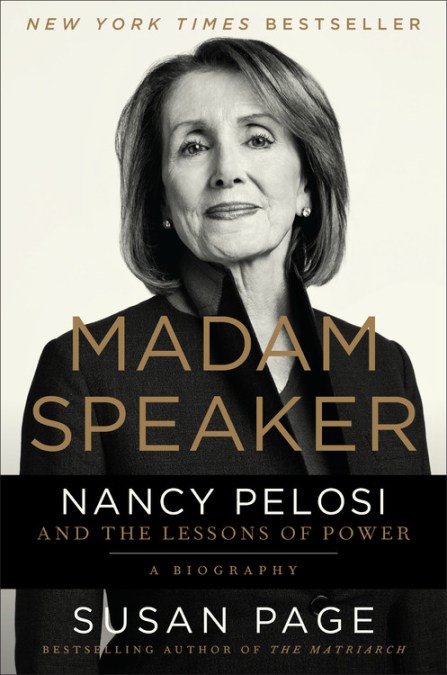Articles
Jo Freeman: There’s Plenty To Do at the RNC – If You Have the Right Credentials
by Jo Freeman
Every national nominating convention has plenty of auxiliary events, some authorized, some not. Getting space can be a challenge; getting the word out even more so. But they do it nonetheless. Press were given a RNC 2024 Master Event Calendar, which was updated a few days later. Events began on Sunday and ended on Thursday. The actual convention sessions were just one item on the list. The calendar said if an event was Open or Closed to press, and also whom to contact to register. I’m going to describe some of the events, including a couple I went to, and a couple I was turned away from.
Since my focus is on women, I obviously wanted to go to those events – if I could.
The National Federation of Republican Women is the largest grassroots Republican women's organization in the country with hundreds of clubs. Founded in 1938, its members made the phone calls and knocked on the doors that elected Republican candidates for decades. It’s Tuesday luncheon featured Arkansas Governor Sarah Sanders. The Master Calendar said it was SOLD OUT and they wouldn’t let me in. I was able to get into their lounge at the Fiserv Forum Wednesday evening, where I was repeatedly asked if I was a member, and if not, would I join. “I’m press,” I said. “I can’t join anything partisan.” I then said: “What brings you here?” On hearing that, finding anyone willing to chat with me was like pulling teeth.
Moms for Liberty met in a concert hall that afternoon. I had pre-registered, and I got in. From high in a balcony seat I listened to several people talk about the evils of transgenderism. It’s webpage says WE BELIEVE Power Belongs to the People. Sound Familiar? With a focus is on parental rights, it wants to “STOP WOKE indoctrination.”
Tuesday I went to “The New Mavericks” reception co-hosted by the Black Republican Mayors Association and the Georgia Republican Party. They honored Sen. Tim Scott, four Congressmen and two Georgia delegates – all male. There was only one mayor on stage, from Aurora, IL. The chair of the Georgia Republican Party was the one white man on the stage. At that event, women served; they didn’t speak. The RNC reported that 55 delegates to the 2024 convention are Black, up from 18 in 2016.
I missed the Independent Women’s Forum toast to “Women Who Make Our Country Great” because I went to Convention Fest: The Official Delegate Experience, which was held in the streets outside the Fiserve Forum and Baird Hall as well as some space inside Baird. To get to that one you not only needed a credential of some sort, but a USSS pass (which I have).
Concerned Women for America parked its pink bus across from the Baird Center the week before the RNC. No one was home. When Convention Fest opened on Tuesday afternoon, they set up a pink tent, from which its leaders preached to whomever passed by. It calls itself “the nation’s largest public policy women’s organization” but its focus is evangelical Christian. The slogan on the side of its pink bus captures this emphasis: “She Prays, She Votes.” A prayer precedes each sermon.
 Biden-Harris Administration Marks Anniversary of Americans with Disabilities Act and Announces Resources to Support Individuals with Long COVID, Increased Access to Democracy for Voters with Disabilities
Biden-Harris Administration Marks Anniversary of Americans with Disabilities Act and Announces Resources to Support Individuals with Long COVID, Increased Access to Democracy for Voters with Disabilities
"The Biden-Harris Administration has taken significant steps to achieve a more inclusive, accessible, and equitable country for people with disabilities, including people with disabilities that experience multiple forms of discrimination and bias on the basis of race, gender, sexual orientation and other factors. Through quick policy action, the Administration has ensured disabled Americans are receiving resources and are included in key administrative proposals:" Centered Equity as a Priority on Day One. President Biden’s Inauguration Day Executive Order 13985 on Advancing Racial Equity and Support for Underserved Communities. Increased Access to Democracy for Voters with Disabilities. Advanced Diversity, Equity, Inclusion, and Accessibility Across the Federal Government. more »
 Tam Martindes Gray, The Giants and Dodgers Rivalry: The Bridegrooms and Fighting Surrogates Inflamed Local Fans' Passions Sometimes to Deadly Levels
Tam Martindes Gray, The Giants and Dodgers Rivalry: The Bridegrooms and Fighting Surrogates Inflamed Local Fans' Passions Sometimes to Deadly Levels
Editor's Note: I've written about my love of baseball before in recent years, but last night's game between the two former New York City teams, now both located in the state of California, so acutely characterized the intensity of the rivalry.
Origins… more »
 Jo Freeman Reviews MADAM SPEAKER, Nancy Pelosi and the Lessons Of Power: “An iron fist in a Gucci glove”
Jo Freeman Reviews MADAM SPEAKER, Nancy Pelosi and the Lessons Of Power: “An iron fist in a Gucci glove”
The bulk of the book is on Pelosi’s 35 years (to date) in the House. As Washington bureau chief of USA Today, Page has been well-positioned to cover a woman who has broken several glass ceilings. Pelosi was the first women to be elected Whip and House Minority Leader. She’s been Speaker twice (2007-2011 and 2019 to date). Nancy used her ability to corral votes to pass Obamacare. She opposed the invasion of Iraq while remaining cordial with Bush ‘43. She opposed his impeachment for that war while supporting the impeachment of Trump years later. She’s been attacked and lauded. (Editor's note: A marvelous gift for a daughter, relative, friend, for the Holidays and birthdays.) more »
 National Institutes of Health: A Lancet Study Published Highlights Orphanhood as An Urgent and Overlooked Consequence of the Pandemic
National Institutes of Health: A Lancet Study Published Highlights Orphanhood as An Urgent and Overlooked Consequence of the Pandemic
More than 1.5 million children around the world are estimated to have lost at least one parent, custodial grandparent, or grandparent who lived with them due to death related to COVID-19 during the first 14 months of the pandemic, according to a study published in The Lancet. “Studies like this play a crucial role in illuminating the COVID-19 pandemic’s long-lasting consequences for families and the future mental health and wellbeing of children across the globe,” said NIDA Director Nora D. Volkow, M.D. “Though the trauma a child experiences after the loss of a parent or caregiver can be devastating, there are evidence-based interventions that can prevent further adverse consequences, such as substance use, and we must ensure that children have access to these interventions.” more »






